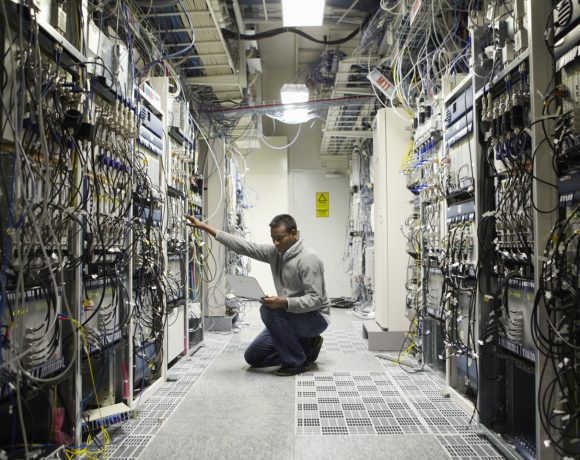8K and AI: The future of home entertainment is upon us

By Nikola Aksentijevic, Director and Head of Visual Display Division, Samsung Gulf Electronics
The evolution of the TV has been marked by significant milestones, from the transition from black and white to colour, the shift from standard definition to high definition, and, more recently, the leap from HD to 4K. Each of these advancements has dramatically enhanced the quality of our viewing experience.
However, the latest developments in home entertainment technology, particularly the introduction of 8K resolution televisions and the integration of artificial intelligence, represent a quantum leap that promises to redefine our relationship with visual media.
To fully appreciate the significance of 8K resolution, it is essential to understand its technical specifications. An 8K display boasts a resolution of 7680 x 4320 pixels, resulting in 33 million pixels. This represents four times the resolution of 4K (3840 x 2160) and sixteen times that of Full HD (1920 x 1080).
The implications of such ultra-high resolution are profound. The ability of the human eye to discern individual pixels at typical viewing distances is effectively neutralised, creating an image of unprecedented clarity and detail. This level of visual fidelity fosters a degree of viewer immersion in previously inaccessible in-home environments, effectively closing the gap between home entertainment and high-end cinema experiences.
The critical role of AI upscaling
While the potential of 8K resolution is undeniable, it presents a significant challenge: the current scarcity of native 8K content. This is where artificial intelligence plays a crucial role. For example, Samsung’s Neural Quantum Processor, a sophisticated AI-driven system, addresses this content gap through advanced upscaling techniques. Samsung’s 98-inch Neo QLED 8K TV, powered by the Neural Quantum Processor, showcases the latest advancements in display technology, promising viewers enhanced picture quality and immersive viewing experiences.
The Neural Quantum Processor utilises machine learning algorithms to analyse lower-resolution content in real-time. It identifies patterns, textures, and edges within the image and intelligently introduces additional pixels to approach 8K quality. This process involves more than simple pixel doubling; it leverages a vast database of image information to make informed decisions about enhancing the picture.
For instance, when upscaling a 4K image of a forest scene, the AI does not merely increase the pixel count. It recognises elements such as leaves, bark textures, and subtle colour gradations, then uses this understanding to add realistic detail not present in the original footage. The result is a significantly enhanced image that, while not native 8K, offers a viewing experience far superior to the original lower-resolution content.
Enhanced visual and auditory experience
Modern 8K TVs incorporate several additional technologies that elevate the viewing experience. For example, HDR (High Dynamic Range) dramatically expands the display’s brightness range and colour gamut. This technology allows for incredibly bright highlights and deep, nuanced shadows within the same frame, resulting in an image with remarkable contrast and vibrancy.
Samsung Neo QLED 8K TV AI capabilities extend beyond upscaling. The system continuously analyses the content and the viewing environment’s ambient lighting conditions. It then dynamically adjusts various picture parameters such as contrast, sharpness, and colour balance to optimise image quality in real time. This adaptive process ensures that the viewer experiences the best possible picture, regardless of the content or viewing conditions.
Integrating audio technologies such as Dolby Atmos and Object Tracking Sound represents a significant advancement. Dolby Atmos creates a three-dimensional soundstage, allowing for precise placement of audio elements within the viewing space. Object Tracking Sound takes this further by dynamically adjusting the audio output to match on-screen movement, creating a more immersive and realistic audio experience.
Implications for home entertainment and beyond
Introducing 8K TVs and AI-enhanced viewing experiences has far-reaching implications beyond technical specifications. As these technologies become more prevalent, they will likely influence content creation, distribution methods, and home design.
Content creators, including film studios and streaming services, must adapt their production pipelines to fully utilise 8K resolution. This may involve investing in new camera equipment, updating post-production workflows, and potentially re-evaluating storytelling techniques to leverage the increased detail and immersion offered by 8K displays.
From a distribution perspective, the enormous file sizes associated with 8K content will necessitate advancements in data compression technologies and improvements in broadband infrastructure. This could accelerate the development and deployment of next-generation internet technologies.
In terms of home design, the trend towards larger, more immersive displays may influence architectural decisions. We may see increased dedicated home theatre spaces or living areas specifically designed to accommodate wall-sized displays. This trend is already evident in some regions, such as the Gulf, where larger home sizes are becoming increasingly common.
An exciting immersive future is in store
The home entertainment landscape is on the verge of a profound transformation, driven by the rapid evolution of display technologies and the increasing sophistication of artificial intelligence. These advancements are poised to redefine how we consume content and connect with the stories and experiences that shape our lives.
Advancements in micro-LED technology promise to usher in a new era of visual fidelity. With their ability to deliver unparalleled contrast ratios, breathtaking brightness, and exceptional energy efficiency, micro-LED displays have the potential to surpass the limitations of current technologies, offering viewers an immersive experience that blurs the line between reality and the digital realm.
Simultaneously, the integration of AI is set to revolutionize content discovery and personalisation. By analysing viewing habits and preferences, AI algorithms can curate individualised recommendations, ensuring viewers effortlessly navigate the ever-expanding sea of content and discover experiences that resonate with their tastes.
As these technologies mature and converge, they will democratise access to cinematic-quality experiences, bringing unprecedented levels of visual and auditory fidelity to homes worldwide. This evolution will likely majorly impact content creation, distribution, and consumption, potentially reshaping the entire media landscape as we know it.
The future of home entertainment is one of boundless potential, where the borders between technology and human experience continue to dissolve. As we move forward, witnessing how these innovations redefine our relationship with the screen and unlock new dimensions of storytelling and emotional connection will be fascinating.
Last Updated on 6 months by News Desk 2













